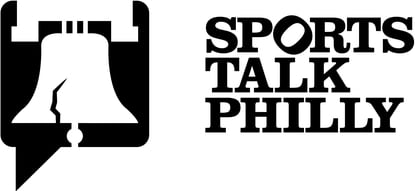Ryan Mathews is playing better than DeMarco Murray; will Chip Kelly start him?
Patrick Causey, on Twitter @InsdeTheHuddle
Delayed, but not forgotten. I was out earlier this week with a stomach flu, so I was unable to get a post up during the traditional Wednesday slot. But if you follow me on Twitter, you got the heads up on which direction I was heading: the running back dilemma facing Chip Kelly and the Philadelphia Eagles.
Up until this point, it hasn't been a dilemma in the traditional sense because Kelly has shown little interest in playing Ryan Mathews over DeMarco Murray when both players are healthy, despite overwhelming evidence that Mathews is the more effective runner.
Leading up to the season, I had written about why I thought Mathews would have a better season than Murray this year, which you can read here and here.
And it seems that the numbers and tape have borne this out so far this season. Let's break this down further.
Numbers
Here are the raw numbers of Murray and Mathews on the year:
|
Name |
Att |
Yards |
Y/A |
TD |
Tgt |
Rec |
Yards |
Y/R |
TD |
|
Murray |
49 |
130 |
2.7 |
2 |
20 |
18 |
113 |
6.3 |
1 |
|
Mathews |
41 |
205 |
5.0 |
2 |
11 |
8 |
67 |
8.4 |
1 |
As you can see, Mathews has been the more productive runner across the board. His yards per attempt are almost double that of Murray, with a 5.0 ypa versus Murray's paltry 2.7. Mathews also has 75 more yards on eight less carries, and has been a more effective pass catcher out of the backfield (albeit with a smaller sample size), with 2.1 more yards per reception than Murray.
To be fair to Murray, the Eagles offensive line was laughable in run blocking for the early part of the season, which has contributed to his low numbers. There were times against the Atlanta Falcons and Dallas Cowboys that Murray had no chance to gain anything because defenders were coming into the backfield unblocked.
But even when Murray was given good blocking, he has failed to capitalize. This happened last Sunday against the New Orleans Saints, when the Eagles offensive line turned in its best run blocking of the season. Murray ran the ball 20 times for 83 yards and a touchdown, for 4.15 yards per carry. This was Murray's best game of the year, and yet he still produced only marginal results. And as we will see in a moment, the opportunities were there for Murray to be much more productive.
Mathews, by comparison, had just eight carries, but gained 73 yards and a touchdown. His 9.13 yards per carry was more than double that of Murray's.
Digging a little deeper, the advanced metrics support the conclusion that Mathews has been more effective this season, ineffective run blocking notwithstanding. FootballOutsiders.com ranks running backs according to two metrics: DYAR, or Defense-adjusted Yards Above Replacement, and DVOA, which means Defense-adjusted Value Over Average.
These rankings attempt to place values on a running back's performance given the situation (i.e., down and distance) and the strength of the opponent. In other words, it attempts to quantify just how valuable a running back is to his team. While you can find more thorough definitions here, simply put, "DYAR means a running back with more total value. DVOA means a running back with more value per play."
38 rushers qualify for Football Outsiders' rankings because they have at least 40 carries on the season. Mathews is the 11th ranked running back per DYAR ranking, and 3rd overall for DVOA; this ranks Mathews ahead of Adrian Peterson, Eddie Lacy and Todd Gurley, to name a few.
Murray, on the other hand, is playing like one of the worst running backs in the league according to Football Outsiders. His 36th ranking in each category place him third to last out of all qualified quarterbacks, ahead of only Mevlin Gordon and C.J. Anderson.
In other words, Mathews has been one of the best running backs in the NFL so far this season. Murray has been one of the worst.
Tape
Again, Murray's struggles can partly be explained by the offensive line issues early in the season. But there have been times where Murray was missing easy opportunities to gain yards this year even when the plays were blocked properly.
The New Orleans Saints tape presents the best barometer to judge both players. Both running backs played, and the offensive line was effective for the first time all year.
Let's analyze five plays.
Play 1:
First up is a redzone run in the first series for the Eagles. As you can see from the screen shot below, Murray has two good lanes from which he can attack.
At a minimum, Murray needs to get five to seven yards before he gets to the single high safety. If he can make the single high safety miss, he waltzes into the endzone.
Instead, Murray tries to break this run outside for a bigger gain, but falls down in the process:
Some have suggested that Murray has struggled adjusting to running out of the shotgun formation. That's a fair point to an extent; you have a different view and are not able to accelerate before getting the ball in your hands when you run out of the gun. But over the last two weeks, Kelly has implemented more runs with Bradford under center like this. Murray just simply fails to see the running lanes, which has been a consistent problem for him all season.
Murray is also trying to do too much here: instead of taking the easy five to seven yard gain, he is trying to break it outside to conceivably get a touchdown. It is something he has done all season, and likely is the result of Murray trying to compensate for his subpar performances to date.
Which is somewhat ironic, given that Kelly brought in Murray, known as a no-nonsense one cut runner to replace LeSean McCoy because of his penchant for turning down easy yards in pursuit of a home run.
Play 2:
The second play lends credence to this theory. The Eagles are running the ball on first down in the second quarter, and as you can see below, Murray has an easy opportunity to gain a good five yards if he simply cuts upfield.
On the All-22 angle, you get a better understanding of just how wide open this lane is for Murray to exploit:
Instead, Murray notices the safety a good 10 yards away and tries to beat him to the edge for a bigger gain. But Murray lacks the explosion he has had in recent past (more on this in a moment), and is tackled for a marginal gain:
Zach Ertz and Jason Peters do a good job of sealing the edge. If Murray plants his outside foot on the turn and cuts up field, it's an easy five yard gains. But Murray tries to turn a five yard run into a homer; he comes up empty handed instead.
Mathews has not had this issue, as he routinely takes what the offensive line gives him. Even when the offensive line is not creating huge running lanes, Mathews is decisive to the hole, with the type of one cut downhill running style that Kelly talked about all offseason.
Take this run against the Saints where the offensive line did not really create any meaningful hole:
Notice the difference? Mathews does not hesitate, he does not try to bounce it outside. Instead of swinging for the fences, he hits a single and keeps the offense moving forward.
These types of runs keep the Eagles offense out of third and long. The Eagles have the second highest percentages of drives ending in three and outs in the NFL, behind only the Buffalo Bills. They also have the second worst conversion rate on third downs in the league, behind only the Miami Dolphins. The main reason behind these low numbers is that the Eagles are routinely faced with 3rd and 7+ situations, where the percentages for converting are not in the Eagles favor.
The difference between taking these five yard runs instead of swinging and missing for the fences has contributed to the Eagles struggles on offense overall.
Play 3:
The third play is more of the same. On the Eagles first drive, Murray is given a lane that you can drive a truck through with Agholor leading the way. Granted, Agholor isn't the second coming of Mike Alstott, but he can still provide enough resistance to help spring Murray for a few extra yards.
Instead, Murray runs right into the back side of the formation, where the line has not provided any daylight.
Murray's lack of vision is becoming a significant issue for the Eagles offense. While the offensive line still needs to do a better job in some aspects of run blocking — they are not blocking the inside zone, aka the "bread and butter" of Chip Kelly's offense — as effectively as they have in the past. But Murray is not helping his cause with runs like these.
Play 4:
The fourth play is another example of Murray just not seeing the play develop in front of him. Look at the lane opening up on the near side of the field:
Again, this is another easy gain for Murray. But he again hesitates in the backfield and makes the wrong read:
Noticing a pattern yet? Look at the right side of the line (your left), the lane is there; Murray just runs into the backside of the play where three defenders are waiting unblocked.
Play 5:
The Eagles ran the outside zone to great success against the Saints, particularly with Mathews at the end of the game. But Murray struggled to do much with the opportunities that he was given on these plays.
Here, Murray lines up on the opposite side of Sam Bradford and starts working towards the left side of the Eagles line. Jason Kelce, Allen Barbre and Jason Peters do a good job blocking this play up, leaving Murray with a sizable hole to exploit.
But instead, Murray almost runs into Peters, hesitates, then tries to break a run against the blocking pattern of the play:
Here is the same outside zone play with Mathews, with the slight variation that he lined up on the opposite side of Bradford:
This play is obviously blocked better than the Murray run, making it easier to get to the outside edge for a big gain. But Murray still failed to take what the offense created, which was at a minimum a five yard gain. The lanes are there, he simply missed the opportunity.
Bonus play: one thing we have not seen so far this season is Murray making defenders miss in the backfield. If a defender comes in the backfield unblocked, Murray has gone down with little resistance.
While Mathews will never be mistaken for LeSean McCoy, he has still shown the ability to make defenders miss and make something out of nothing.
There are several examples this year of Mathews making this play while Murray gets tackled for a loss. (By the way, note how spectacularly Zach Ertz failed at making that block. A for effort, kid).
Let's finish on this note: I pegged Murray as a potential letdown candidate for this season not because Murray is a bad running back; you don't lead the NFL in rushing yards if you aren't extremely talented.
But I was concerned with how often Murray touched the ball: an absurd 497 times last year, including the playoffs. During the regular season, he carried the ball 392 times, putting him squarely within the cross hairs of the "Curse of 370."
What is the Curse of 370 you ask? Essentially, any running back that has ever carried the ball for more than 370 times in a single season saw a significant decline in production the following year.
BleacherReport.com provides the full analysis here, but here are the most important takeaways. Of the 28 running backs in NFL history that have eclipsed the 370 carry mark:
- 12 saw their production drop by half or more the following year;
- 19 missed time due to injury the following year;
- 5 missed at least half the year;
- The average drop-off in production: a ridiculous 39.2%;
- Several players, including Larry Johnson, Terrell Davis, Jamaal Lewis and Jamaal Anderson, were never the same.
Raise that number to 390 carries, which Murray achieved and then some last year, and the numbers were just as concerning: all players averaged a 33 % drop in production, and an 11 % drop in yards per carry.
Murray is following suit, and after six games, it is hard to ignore his decline given the history of other running backs that have struggled the season after a heavy workload.
While there is still a chance Murray turns things around, Mathews has been the more effective runner to date. And given that the Eagles are faced with a must win game against the New York Giants, Kelly cannot continue to play favorites. It's time for the Eagles to turn to Mathews as the lead back until Murray can prove that he deserves to be the guy.







